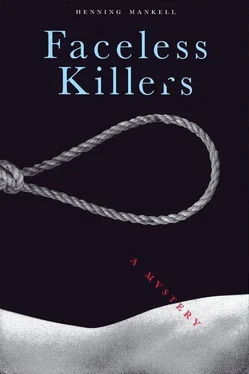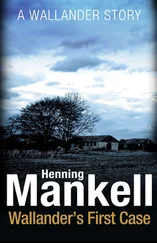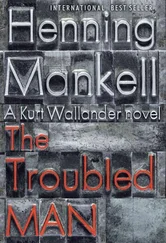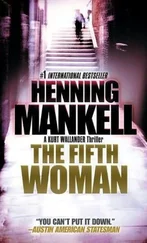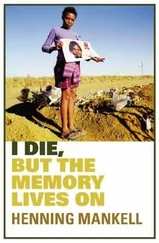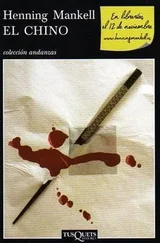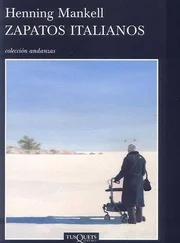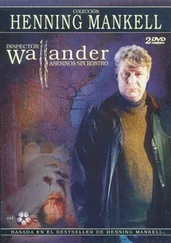Then he pushed open the door and was gone.
“Tell Martinson to run a check on him,” said Wallander. “We probably won’t find anything. But it’s best to make sure.”
“What do you think about what he said?” Hanson wondered.
Wallander thought about it before he answered.
“There was something convincing about him. I don’t think he was lying or imagining things or making things up. I believe he did discover that Johannes Lövgren was living a double life. I think he was protecting his sister.”
“Do you think he could have been involved?”
Wallander was certain when he replied. “Lars Herdin didn’t kill them. I don’t think he knows who did, either. I think he came to us for two reasons. He wanted to help us find one or more individuals so he can both thank them and spit in their face. As far as he’s concerned, whoever murdered Johannes did him a favor. And whoever murdered Maria ought to be beheaded in the public square.”
Hanson got up. “I’ll tell Martinson. Anything else you need right now?”
Wallander looked at his watch.
“Let’s have a meeting in my office in an hour. See if you can get hold of Rydberg. He was supposed to go into Malmö and find a guy who mends sails.”
Hanson gave him a quizzical look.
“The noose,” said Wallander. “The knot. You’ll understand later.”
Hanson left, and he was alone.
A breakthrough, he thought. All successful criminal investigations reach a point where we break through the wall. We don’t know what we’re actually going to find. But there’s always a solution somewhere.
He went over to the window and looked out into the twilight. A cold draft was seeping through the window frame, and he could see from a swaying streetlight hanging on a wire over the street that the wind had picked up some more.
He thought about Nyström and his wife.
For a whole lifetime they had lived in close contact with a man who had not been the man he pretended to be at all.
How would they react when the truth was revealed?
With denial? Bitterness? Amazement?
He went back to the desk and sat down. The first feeling of relief that followed a breakthrough in a crime investigation often faded quite rapidly. Now there was a conceivable motive, the most common of all: money. But as yet there was no invisible finger pointing in a specific direction.
There was no murderer.
Wallander cast another glance at his watch. If he hurried, he could drive down to the hot-dog kiosk at the railway station and grab a bite to eat before the meeting. This day too was going to pass without a change in his eating habits.
He was just about to put on his jacket when the phone rang.
At the same time there was a knock on the door.
The jacket landed on the floor as he grabbed the phone and shouted, “Come in.”
Rydberg stood in the doorway. He was holding a large plastic bag.
He heard Ebba’s voice on the phone.
“The TV people absolutely have to get hold of you,” she said.
He quickly decided to talk to Rydberg first before he had to deal with the media again.
“Tell them I’m in a meeting and won’t be available for half an hour,” he said.
“Sure?”
“What?”
“That you’ll talk to them in half an hour? Swedish TV doesn’t like to be kept waiting. They presume that everyone’s going to fall to their knees whenever they call.”
“I’m not going to fall to my knees for their cameras. But I can talk to them in half an hour.”
He hung up.
Rydberg had sat down in the chair by the window. He was busy drying off his hair with a paper napkin.
“I’ve got good news,” said Wallander.
Rydberg kept on drying his hair.
“I think we’ve got a motive. Money. And I think we should look for the killers among people who were close to the Lövgrens.”
Rydberg tossed the wet napkin into the wastebasket.
“I’ve had a miserable day,” he said. “Good news is welcome.”
Wallander spent five minutes recounting the meeting with Lars Herdin, the farmer. Rydberg stared gloomily at the glass shards on the floor.
“Strange story,” said Rydberg when Wallander was finished. “It’s strange enough to be completely true.”
“I’ll try to sum it all up,” Wallander went on. “Someone knew that Johannes Lövgren occasionally kept large sums of money at home. This gives us robbery as a motive. And the robbery developed into a murder. If Lars Herdin’s description of Johannes Lövgren is right, that he was an unusually stingy man, he would naturally have refused to reveal where he hid the money. Maria Lövgren, who can’t have understood much of what was happening on the last night of her life, was forced to accompany Johannes on his final journey. So the question is who, besides Lars Herdin, knew about these irregular but large cash withdrawals. If we can answer that, we can probably answer everything.”
Rydberg sat there thinking after Wallander fell silent.
“Did I leave anything out?” asked Wallander.
“I’m thinking about what she said before she died,” said Rydberg. “Foreign. And I’m thinking about what I’ve got in this plastic bag.”
He got up and dumped the contents of the bag onto the desk.
It was a pile of pieces of rope. Each one with an artfully tied knot in it.
“I spent four hours with an old sailmaker in an apartment that smelled worse than anything you can imagine,” said Rydberg with a grimace. “It turned out that this man was almost ninety years old and well on his way to senility. I wonder whether I shouldn’t contact one of the social agencies. The old man was so confused that he thought I was his son. Later one of the neighbors told me that his son has been dead for thirty years. But he sure did know about knots. When I finally got out of there, it was four hours later. These pieces of rope were a present.”
“Did you find out what you wanted to know?”
“The old man looked at the noose and said he thought the knot was ugly. Then it took me three hours to get him to tell me something about this ugly knot. In the meantime he managed to nod off for a while.”
Rydberg gathered up the bits of rope in his plastic bag as he went on. “Suddenly he started talking about his days at sea. And then he said that he’d seen that knot in Argentina. Argentine sailors used to tie that knot as a leash for their dogs.”
Wallander nodded.
“So you were right. The knot was foreign. The question now is how this all fits in with Lars Herdin’s story.”
They went out in the corridor. Rydberg went into his office, while Wallander went in to see Martinson and study the printouts. It turned out that there were incredibly exhaustive statistics on foreign-born citizens who had either committed or been suspected of committing crimes in Sweden. Martinson had also managed to run a check of previous attacks on old people. At least four different individuals or gangs had committed assault on old isolated people in Skåne during the past year. But Martinson also found out that all of them were presently incarcerated in various penal institutions. He was still waiting for word on whether any of them had been granted leave on the day in question.
They held the meeting of the investigative team in Rydberg’s office, since one of the office clerks had offered to vacuum the glass from Wallander’s floor. The phone rang almost constantly, but she didn’t feel like picking it up.
The investigative meeting was long. Everyone agreed that Lars Herdin’s testimony was a breakthrough. Now they had a direction to go in. At the same time they went over everything that had been learned from the conversations with the residents of Lenarp, and the people who had telephoned the police or responded to the questionnaire they had sent out. A car that had driven through a town just a few kilometers from Lenarp at high speed late on Sunday night attracted special attention. A truck driver who had started a trip to Göteborg at three o’clock in the morning had encountered the car going around a tight curve and had almost been hit. When he heard about the double murder he started thinking, and then he called the police. He wasn’t sure, but after going through pictures of various cars he decided it was probably a Nissan.
Читать дальше
